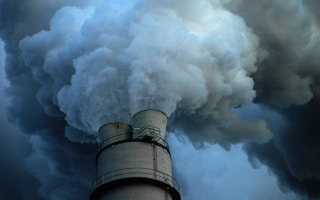Companies around the world have increased their commitments to fight climate change, with the more ambitious ones claiming to reach net-zero emissions by 2050. This is not new news. But, how does this “net” work? Well, corporations can net their emissions by actively removing greenhouse gases from the atmosphere.
To continue reading, subscribe to Eco‑Business.
There's something for everyone. We offer a range of subscription plans.
- Access our stories and receive our Insights Weekly newsletter with the free EB Member plan.
- Unlock unlimited access to our content and archive with EB Circle.
- Publish your content with EB Premium.
For the nerdier amongst us, this process is called Carbon Dioxide Removal (CDR). CDR includes planting trees—afforestation or reforestation—as well as technological approaches such as producing bioenergy with carbon capture and storage (BECCS) or capturing direct air carbon with storage (DACCS).
However, as highlighted by Greenpeace in a recent report, these approaches must not become get-out-of-jail-free cards for polluters, since there is a limit to how much carbon dioxide can be reasonably removed. Furthermore, there’s only so much land available to plant new trees, and most other methods are expensive and difficult.
The Intergovernmental Panel on Climate Change (IPCC) notes that “most CDR technologies […] raise substantial concerns about adverse side effects on environmental and social sustainability”. Both afforestation / reforestation and BECCS require huge areas of land to deliver significant CO2 removal. If deployed on agricultural land, they are likely to increase food prices. If deployed on wild land, they may reduce biodiversity.
If we were to use BECCS to remove 12,000 metric tons per year of CO2—which is the 2100 median in the IPCC 1.5 degrees Celsius pathways—the amount of land area that would need to be devoted to bioenergy, is equivalent to one to two times the size of India. Or 25 to 46 per cent of the total crop-growing area in the world. Sustainable? Doable? Surely not…
DACCS, on the other hand, doesn’t require land but is extremely energy-intensive. Capturing three quarters of current CO2 emissions would require half the amount of global electricity that is currently generated and heat equivalent to half of all energy consumption.
What do we say?
Prevention in the first place is better than attempting to cure, and this is what companies should do. Minimise their emissions and only offset what cannot be cut. The Greenpeace report highlights that if just Eni Spa and International Consolidated Airlines (British Airways) were to offset their emissions using forestation, these two companies could use up to 12 per cent of the total land available.
Why are these two companies looking to remove such a high percentage of CO2 in the atmosphere? Arabesque S-Ray data provides interesting insights into their respective sustainability performance. The Italian energy company has an overall ESG score of 55.40/100*, ranking it in the 51st percentile of companies in the Energy Minerals sector.
The British airline, on the other hand, has an ESG rating of 44.07/100*, ranking it in the bottom 22 per cent of corporates in the transportation sector. This underperformance against their peers suggests room for improvement before applying any CDR techniques.
Focusing on just the Temperature Score, a metric that looks at the contribution of individual companies to the global temperature rise gross of carbon offsets, the picture does not change. Both companies have a long-term (2050) Temperature Score of >2.7 degrees Celsius*, meaning that they are not aligned with the Paris Agreement and are actually pretty far away.
What does it mean?
As highlighted by the IPCC, the reliance on CDR is a major risk to humanity’s ability to achieve the Paris goals. The uncertainties are not whether mechanisms to remove CO2 “work”. They all work, in a laboratory at least. Rather, it is whether they can be delivered at scale, with sufficient funding and regulation, to store CO2 over the long term without unacceptable social and environmental impacts.
CDR is not an alternative to emissions reduction, and in fact can only play a minority role in mitigation. It should only be used to offset those emissions that are the hardest and most expensive to reduce.
The onus is on regulators, investors, consumers and the media to remember that net-zero climate targets are only as good as the “net”.
This article was written by asset management firm Arabesque.











